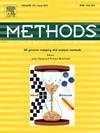通过定制挤出机三维打印掺钙异麦芽酮:在组织模拟水凝胶基质中创建类似血管网络的简便方法。
IF 4.3
3区 生物学
Q1 BIOCHEMICAL RESEARCH METHODS
引用次数: 0
摘要
3D 打印领域发展迅速,在从航空航天到 3D 打印器官等各个领域都有广泛应用。本研究介绍了一种简便的生物制造方法,通过在复合水凝胶基质中使用异麦芽糖(糖醇)作为牺牲成分,在水凝胶基质中创建人造血管网络。传统的三维打印机有挤出机和热端组件,而生物打印机则使用气动活塞和压电驱动挤出机制。在本研究中,我们介绍了一种基于注射器泵的定制微型精密导螺杆挤出机制的设计和操作,该机制集成了温控热块。目前,我们正在使用这种集成装置进行基于异麦芽酮的熔融三维打印,该装置可轻松安装在 Z 轴上,并使用具有高扭矩的齿轮步进电机进行驱动,可对高粘度聚合物进行受控挤出,其中糖结构用作牺牲材料,用于在复合水凝胶基质内的微流体域中制造类似人造血管网络的网络。使用 COMSOL Multiphysics 进行了计算研究,以预测 DMEM 培养基的扩散模式,从而估算通过多孔介质的质量流量。此外,还利用人体脂肪间充质干细胞(HAD-MSC)进行了基于细胞的测试,该细胞在血管水凝胶基质上培养,并灌注了具有确定流速的培养基,以模拟人体组织内营养物质和气体交换的自然功能。所建议的方法可用于制作等效的组织模型,这些模型可用于片上药物测试平台、药物发现和再生医学领域。本文章由计算机程序翻译,如有差异,请以英文原文为准。
3D printing of calcium doped Isomalt via custom-made Extruder: Facile approach for creating blood vascular like networks within tissue mimicking hydrogel matrix
3D printing domain has witnessed rapid advancements with immense applications in various fields ranging from aerospace to 3D printed organs. This study describes a facile biofabrication approach for creating an Artificial blood vascular network inside the Hydrogel matrix by using Isomalt sugar (Sugar Alcohol) as a sacrificial component inside a composite-Hydrogel matrix. Conventional 3D-printers have extruder and hot-end assembly, whereas Bioprinters use pneumatic-piston, and piezoelectric-driven extrusion mechanisms. In this study, we describe the design and operation of a custom-made miniature precision lead screw-based syringe-pump extruder mechanism with integrated temperature-controlled heat-block. We are currently using this integrated setup for melt Isomalt-based 3D printing, which can be easily mounted over the Z-axis and is driven using a geared stepper motor with high torque, providing controlled extrusion of highly viscous polymers where sugar structures are used as sacrificial materials for making Artificial blood vascular like networks in the microfluidics domain within the composite Hydrogel matrix. Computational studies using COMSOL Multiphysics were performed to predict the diffusion pattern of the DMEM culture medium to estimate the rate of mass flow through a porous media. Furthermore, Cell based testing is performed using Human Adipose Derived Mesenchymal Stem Cells (HAD-MSC’s) which were cultured over the vascular Hydrogel matrix perfused with culture media with defined flowrates to mimic the natural function of the Nutrient and gaseous exchange inside human tissues. The proposed can be used to produce equivalent Tissue models which could be potentially used in On-chip drug testing platforms, drug discovery and regenerative medicine domains.
求助全文
通过发布文献求助,成功后即可免费获取论文全文。
去求助
来源期刊

Methods
生物-生化研究方法
CiteScore
9.80
自引率
2.10%
发文量
222
审稿时长
11.3 weeks
期刊介绍:
Methods focuses on rapidly developing techniques in the experimental biological and medical sciences.
Each topical issue, organized by a guest editor who is an expert in the area covered, consists solely of invited quality articles by specialist authors, many of them reviews. Issues are devoted to specific technical approaches with emphasis on clear detailed descriptions of protocols that allow them to be reproduced easily. The background information provided enables researchers to understand the principles underlying the methods; other helpful sections include comparisons of alternative methods giving the advantages and disadvantages of particular methods, guidance on avoiding potential pitfalls, and suggestions for troubleshooting.
 求助内容:
求助内容: 应助结果提醒方式:
应助结果提醒方式:


